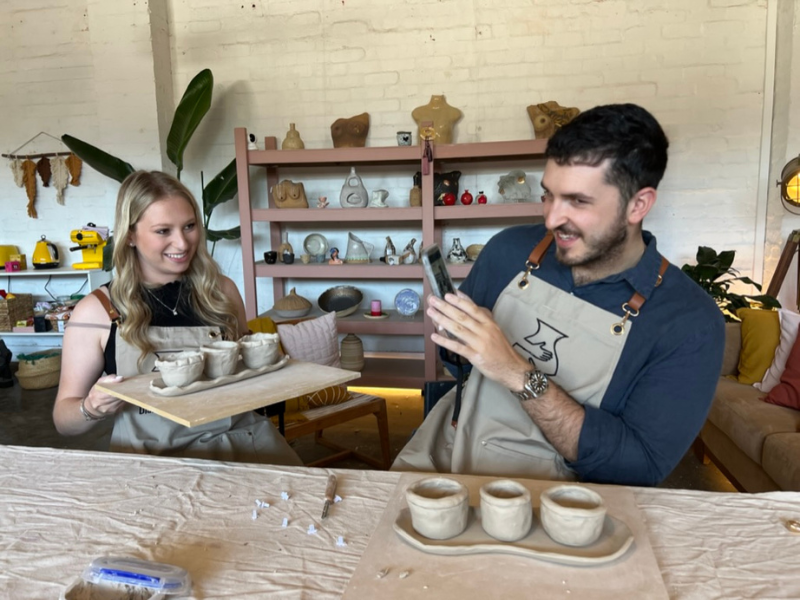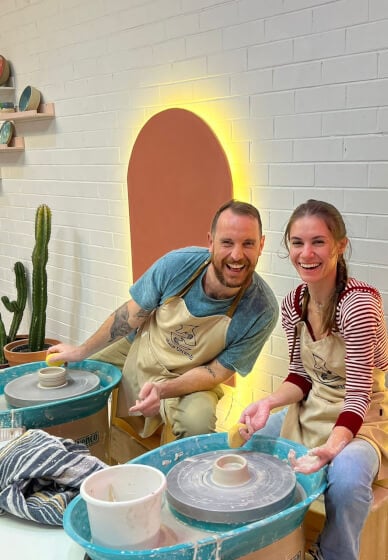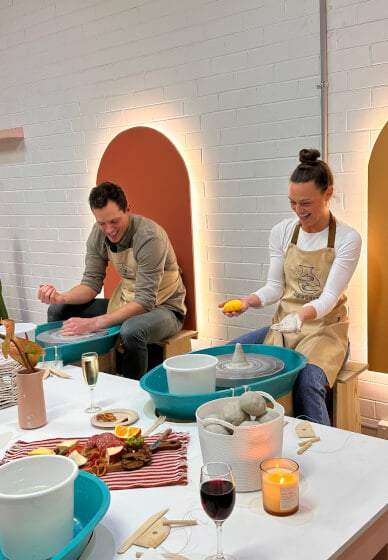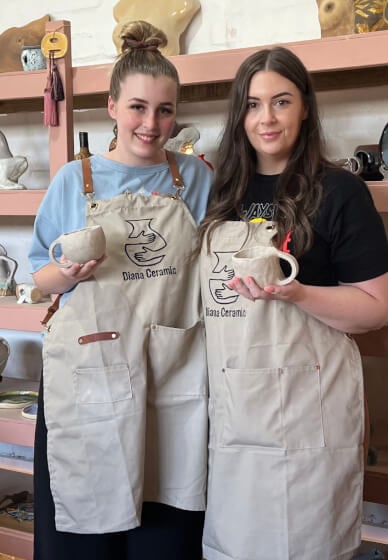Is Making Household Ceramics A Fun Group Activity?

Creating ceramics has long been a cherished activity, merging creativity with craftsmanship. But is it just an individual pursuit, or can it be turned into a fun group activity? Imagine gathering with friends or family, rolling your sleeves, and shaping clay into unique household items. Sounds exciting. Let's explore why making household ceramics can be an engaging and enjoyable group activity.
What makes household ceramics a popular group activity?
Household ceramics are famous for group activities and social gatherings. Here's why:
- Creative expression: Each person gets the chance to express their creativity. Whether you're making a simple mug or an intricate bowl, the process allows everyone to showcase their unique style.
- Hands-on engagement: Ceramics involve many hands-on activities, from moulding the clay to painting the finished product. This tactile engagement can be very satisfying and therapeutic. Just as making household ceramics can be a therapeutic and engaging group activity, finding creative and mindful ways to cope with stress can help you break the cycle of emotional eating.
- Learning experience: For many, ceramics is a new skill. Learning together as a group can be challenging and rewarding, making the experience even more memorable.
- Tangible takeaways: Unlike some group activities, ceramics offer a tangible product at the end. Participants can take home their creations, giving them a lasting memory of the day.
Ceramic art classes provide a structured and supportive environment for those looking to learn new skills and connect with others.
How can you ensure everyone enjoys the process?
Ensuring that everyone in the group enjoys the ceramics-making process is essential to the activity's success. Here are some tips to keep the session enjoyable for all:
- Set the right tone: Start the session with a positive, relaxed atmosphere.
- Provide clear instructions: Ensure instructions are clear and easy to follow, especially for beginners.
- Encourage collaboration: Promote teamwork by encouraging participants to share ideas, tips, and techniques.
- Cater to different skill levels: If your group has varying experience levels, consider offering different project options catering to beginners and more advanced participants.
- Include breaks: Allow for short breaks during the session, giving everyone time to relax, chat, and admire each other's progress.
Why are household ceramics ideal for social bonding?
Household ceramics can bring people together, as can a few other activities. Combining creativity, teamwork, and a shared goal makes it a perfect medium for social bonding. Here's why:
- Shared experience: Creating ceramics together is a shared experience that allows participants to connect on a deeper level. The process itself becomes a conversation starter, fostering connections.
- Celebrating successes: Celebrating each other's creations, no matter how simple or complex, builds a positive group dynamic. Compliments and encouragement can boost confidence and strengthen relationships.
- Overcoming challenges together: Ceramics can be challenging, especially for beginners. Working through these challenges as a group builds trust and cooperation.
- Relaxed atmosphere: Ceramics' tactile nature creates a comfortable and informal atmosphere, encouraging open communication and genuine interaction among participants.
Can household ceramics be adapted for different group sizes?
One of the great things about household ceramics is its adaptability to various group sizes, from small gatherings to significant events. Here's how it can be tailored to fit different group sizes:
- Small groups: The activity can be more intimate in smaller groups, with participants having more one-on-one time with the instructor. This allows for more personalised guidance and the opportunity to delve deeper into techniques.
- Medium-sized groups: Splitting into smaller teams can influence groups of around 10-15 people. Each team can work on a specific type of project, fostering friendly competition and collaboration.
- Large groups: Larger groups might require more structure and additional instructors. Setting up multiple workstations with different projects or stages of the ceramic process can keep everyone engaged and prevent overcrowding.
- Family gatherings: Household ceramics can be an excellent activity for family gatherings, where participants of all ages can join.
- Corporate events: Ceramics can be an innovative way to break the ice and encourage teamwork for corporate events or team-building exercises. Consider incorporating themes or challenges that align with company values or goals.
What are the best tools and materials for group ceramics?
The right tools and materials are crucial to a successful ceramics-making session. Here's a guide to what you'll need:
- Clay: The foundation of any ceramic project is to choose a clay type suitable for beginners, such as air-dry or stoneware clay. It should be easy to work with and resilient enough to handle multiple re-shaping attempts.
- Pottery wheels: A pottery wheel can be an exciting addition for those looking to experience the traditional method.
- Hand tools: Basic hand tools like carving knives, wire cutters, and shaping paddles are essential.
- Glazes: Offer a variety of glazes for participants to decorate their pieces. Non-toxic, easy-to-apply glazes are ideal, especially if children are involved.
- Kiln access: If your group is serious about ceramics, having access to a kiln is necessary for firing the pieces. For more casual sessions, air-drying clay that doesn't require a kiln might be more convenient.
- Protective gear: Ensure everyone can access aprons, gloves, and other protective gear to keep clothes clean and hands safe from sharp tools or hot surfaces.
How do you plan a successful household ceramics session?
Planning is vital to ensuring a smooth and enjoyable household ceramics session. Here's a step-by-step guide to help you get started:
- Define the group's objectives: Understand the group's goals. Are they looking to learn new skills, bond as a team, or have fun?
- Choose the right project: Select a project that matches the group's skill level and interests. Simple projects like making a mug, plate, or bowl are often a good starting point.
- Set up the workspace: Ensure the workspace is well-organised and has enough room for everyone to work comfortably.
- Hire an experienced instructor: A knowledgeable instructor can make a big difference in the quality of the session. They can offer guidance, answer questions, and ensure everyone stays on track.
- Prepare for breaks and refreshments: Incorporate breaks into the session plan and consider providing refreshments to keep energy levels up.
- End with a showcase: At the end of the session, encourage everyone to display their finished pieces. This provides a sense of accomplishment and an opportunity for participants to appreciate each other's work.
Experience our ceramic marbled mug making workshop at Diana Ceramic!
Ready to explore the art of household ceramics? Join a ceramic marbled mug making workshop that is perfect for group activities. Whether you're planning a fun day with friends, marking a special occasion, or simply wanting to try something creative, our workshops provide the perfect setting for a memorable experience. Gather your group, unleash your creativity, and take home a stunning, personalised mug you'll cherish.
Contact Diana Ceramic today and enjoy the satisfaction of creating something truly unique together!



